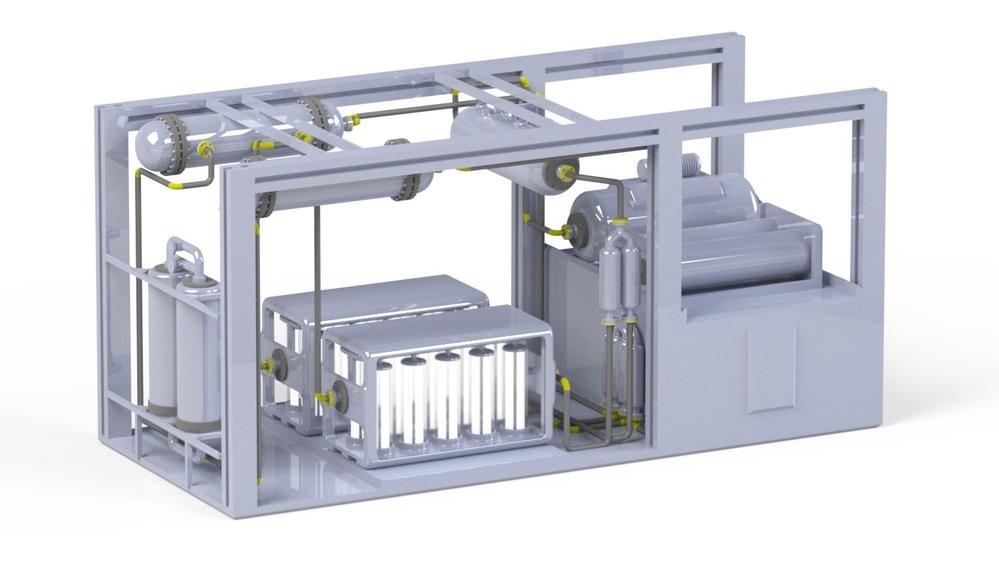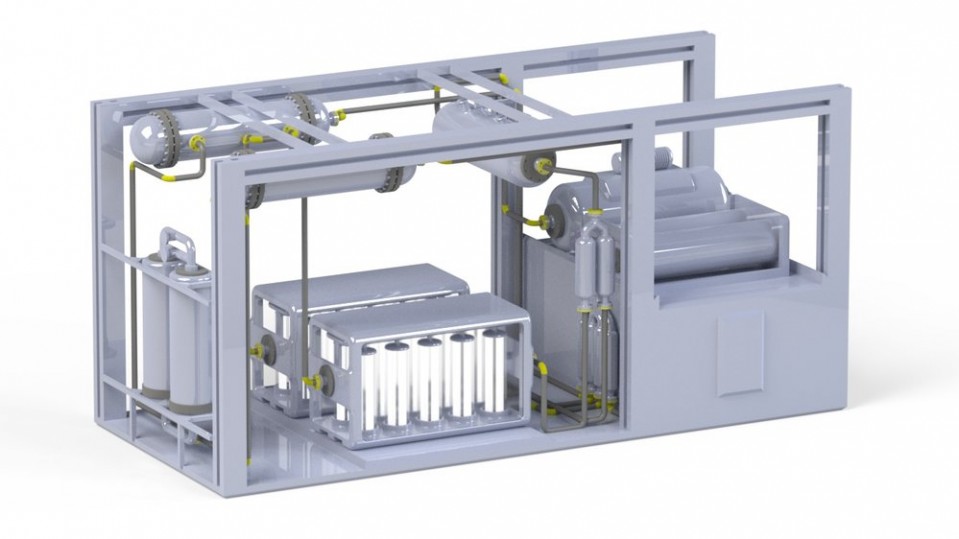

Climate Change / Battery Technology
How nanoparticles that harvest light could curb climate emissions
Syzygy Plasmonics has raised nearly $6 million to produce a cleaner form of hydrogen, using a novel type of photocatalyst.

Manufacturing chemicals creates a huge amount of greenhouse-gas emissions, both from the heat needed to drive production and from by-products of the reactions themselves. But new technology emerging from the lab could transform these conventional industrial methods.
A Rice University spinout is pursuing a novel way of producing hydrogen and other chemicals by relying on nanoparticles that enable light, rather than heat, to power the reactions. Syzygy Plasmonics will disclose on Monday that it’s raised $5.8 million, in a funding round co-led by MIT venture firm The Engine and the GOOSE Society of Texas. (See “Investing in tech that’s worth the wait.”)
The Houston-based startup will use the funds to build a pilot-scale plant for producing hydrogen. The company believes the technology could reduce the emissions usually generated in the process by as much as half.
Hydrogen is a $130 billion market today, mainly used in oil refining, chemical production, and steelmaking. Many believe it has growing promise for energy storage as well, as a way of powering vehicles and balancing the electricity grid.
The vast majority of hydrogen is produced from natural gas, using a process known as steam reforming that uses heat, pressure, and chemical catalysts to convert the gas into hydrogen and, problematically, carbon dioxide. Between this by-product and the heat from fossil fuels, the process emits more than 800 million tons of carbon dioxide annually, equivalent to the combined emissions of the United Kingdom and Indonesia, as the International Energy Agency noted in a recent report.
Syzygy’s founders believe they can address a big part of problem this by swapping the chemical catalysts for a new type of photocatalyst developed by and licensed from Rice University.
Researchers have been investigating photocatalysts for decades. So far, however, they’re only used in limited applications, like water and air purification, in part because they haven’t proved very efficient at driving chemical reactions.
Rice professors Naomi Halas and Peter Nordlander, two of the company’s cofounders, figured out a way to combine so-called plasmonic nanoparticles, a promising category of photocatalysts, with traditional catalysts. In a 2016 paper in Proceedings of the National Academy of Sciences, the researchers found that this coupling approach delivered high light absorption and efficient reactions, and was highly customizable for particular applications.
Syzygy believes that by relying on these hybrid nanoparticles and building a specialized reactor, it can run the hydrogen production process using LEDs, which could be powered by wind, solar, or hydroelectric power. That would eliminate the need for the fossil fuels burned to produce steam and additional heat in the traditional process, which account for around half of the emissions.
It wouldn’t address the emissions from the carbon dioxide created as a by-product, though the company did receive a US Department of Energy grant to explore ways to do that as well. The company believes similar photocatalysts could be used to produce cleaner versions of other industrial products made with catalysts, potentially including synthetic fuels and fertilizers.
Syzygy is among a handful of startups focusing on industrial climate pollution, which produces more than 20% of US and global emissions. (See “A new way to make steel could cut 5% of CO2 emissions at a stroke.”)
Chief executive Trevor Best says the company is considering either building and selling the reactors or licensing the technology. But at this point, the company has only developed a lab-bench- scale version of the product.